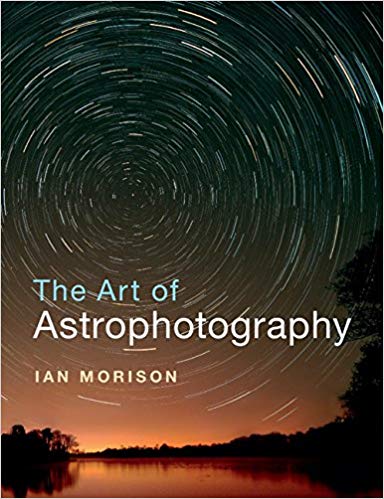The Art of Astrophotography Book Review
 Not another astrophotography book I hear you say, now it seems that observational astronomy it dwindling and now everyone wants to image. Why wouldn’t you though, it nice to share pretty pictures. Imaging equipment can cost a lot of money though, but there are some reasonably priced high frame rate cameras on the market now. In addition to this a lot of the image capture software is free to use.
Not another astrophotography book I hear you say, now it seems that observational astronomy it dwindling and now everyone wants to image. Why wouldn’t you though, it nice to share pretty pictures. Imaging equipment can cost a lot of money though, but there are some reasonably priced high frame rate cameras on the market now. In addition to this a lot of the image capture software is free to use.
The Art of Astrophotography by Ian Morison is a really interesting imaging book mainly because it contains real images you can expect to create on a home astronomy set up with mid-range equipment. I also like it because each section is not too large and a lot of colour images break up the text nicely.
All areas of imaging with various equipment are covered in The Art of Astrophotography. The book begins by teaching you how to image star trails with a digital camera it then moves onto digital camera imaging of constellations. Finally you get told how to image the sky with a digital camera with a tracking mount. This enables you to image for longer with round stars. All that is within the first 30 pages and the full book has over 250 pages so you can already see this book covers a lot about imaging.
Next we have imaging the moon with a smart phone or compact digital camera and then with a DSLR camera. From there we have imaging the Pleaides with a DSLR and a small refractor telescope. NExt there is imaging M42 with a modified DSLR camera and of course how to process the image afterwards.
After the initial section on images The Art of Astrophotography then looks at astrophotography accessories, including telescope types and flatteners. It then gets slightly more complicated by introducing the science of using a guide camera for imaging and about how to cool a standard DSLR camera.
The author next takes on imaging the North American and Pelican Nebula with a refractor and an DSLR as well as discussing how to cut down on light pollution in your images.
Imaging planets is covered next with either a DSLR or a high frame rate camera. Now we are using Registax for processing and looking at planetary imaging with RGB filters. Whilst still using Registax the book moves on to looking at imaging the moon with a high frame rate camera or DSLR.
Now it’s the turn of the Sun, and that is imaged in white light and Ha using either a standard refractor with filters and specific Ha telescopes. There is also information on how to best image comets and meteors and processing them using Deep Sky Stacker.
Next the book moves onto covering the more expensive colour and mono cooled cameras and how you can benefit from their use and what to consider if you are going to buy one.
LRGB colour imaging with filters is covered next, useful if you purchase a mono cooled camera. Purchasing good quality colour filters and a USB powered filter wheel can be costly, something to remember if you decide to purchase a mono camera and want to colour image. After this naturally there is then narrow band filters, so Ha, Sulphur II and OII filters. That is the end of the main part of the book, but up next is some large appendices to look at.
Appendix
The first appendix is about telescopes for imaging and which may be the best for you to use and your budget. This can depend on the type of object you want to image. As I have found not one telescope is good at all imaging tasks. After this comes telescope mounts, which are even more important in my mind than the telescope that sits on it. The effects of the atmosphere are also covered in another appendix and then auto guiding and image calibration are also covered. Finally at the rear of the book are some really good website links.
Overall Thoughts
The author has certainly packed a lot into The Art of Astrophotography. This is a great book which covers a lot of different objects you could image with a lot of different equipment. Who is it for? Well I think it is for a beginner coming into astrophotography as it gives you a complete overview of all the different equipment and objects to image or it’s for those astronomers who have the equipment but want to know more about how to process their images and what they can actually image with their equipment.
Where can I buy The Art of Astrophotography book?
You can buy The Art of Astrophotography from Amazon UK
